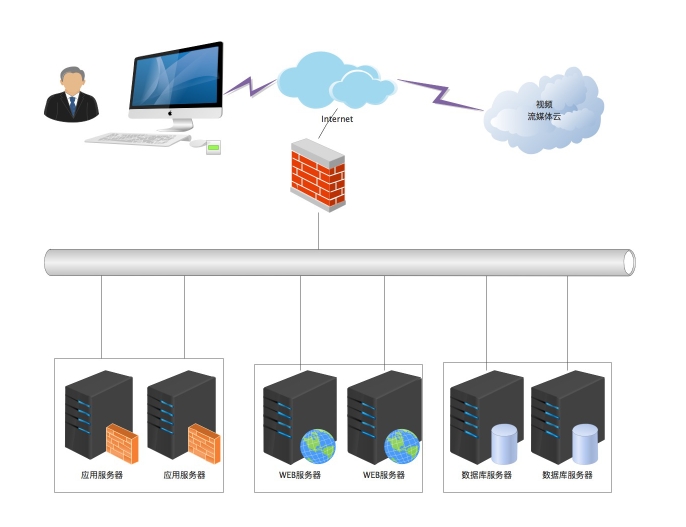A Beginner's Guide to Web Development: Best Practices for Design, Development, and Deployment
- latest articles
- 1.DApp Development & Customization: Merging Diverse Market Needs with User Experience 2.Analysis of the Core Technical System in DApp Project Development 3.How to achieve cross-chain interoperability in Web3 projects? 4.How does the tokenization of points reconstruct the e-commerce ecosystem? 5.How to Set and Track Data Metrics for a Points Mall? 6.What is DApp Development? Core Concepts and Technical Analysis 7.Inventory of commonly used Web3 development tools and usage tips 8.Development of a Distribution System Integrated with Social E-commerce 9.Six Key Steps for Businesses to Build a Points Mall System 10.What is DApp Development? A Comprehensive Guide from Concept to Implementation
- Popular Articles
- 1.Future Trends and Technology Predictions for APP Development in 2025 2.Analysis of the DeFi Ecosystem: How Developers Can Participate in Decentralized Finance Innovation 3.From Zero to One: How PI Mall Revolutionizes the Traditional E-commerce Model 4.DAPP Development | Best Practices for Professional Customization and Rapid Launch 5.Recommended by the Web3 developer community: the most noteworthy forums and resources 6.From Cloud Computing to Computing Power Leasing: Building a Flexible and Scalable Computing Resource Platform 7.Shared Bike System APP: The Convenient Choice in the Era of Smart Travel 8.How to Develop a Successful Douyin Mini Program: Technical Architecture and Best Practices 9.How to Create a Successful Dating App: From Needs Analysis to User Experience Design 10.From Design to Development: The Complete Process of Bringing an APP Idea to Life
In the digital age, having a fully functional and user-friendly website is one of the keys to business success. Whether it's a personal blog, a small business website, or a large e-commerce platform, good website development can directly impact brand image, user experience, and business growth. This article will delve into how to develop a website from scratch, covering all steps from design and development to deployment, and share some best practices to help developers create efficient, reliable, and easily maintainable websites.
1. The First Step in Website Development: Requirements Analysis and Planning
The first step in website development is requirements analysis, a crucial phase as it directly determines the direction of subsequent development work. Requirements analysis typically includes the following aspects:
Goal Setting: Define the main objectives of the website, such as showcasing company information, selling products, or providing services.
Target Audience Analysis: Identify the website's target user groups and understand their needs, habits, and preferences.
Functional Requirements: Based on goals and audience needs, list the required core functions, such as user registration, search functionality, online payments, blog publishing, etc.
Technical Requirements: Consider the technologies the website needs to use, such as front-end development frameworks, back-end development languages, databases, etc.

2. Website Design: User Experience and Interface Design
Website design is not just about aesthetics; it is a core element affecting user experience (UX) and user interface (UI). During the design phase, developers need to consider the following aspects:
2.1 Determining Website Architecture and Page Layout
Website architecture refers to the overall structure of the website, including page categorization, navigation methods, and content distribution. Common website architectures include:
Information Architecture: Create a clear directory structure for the website so users can quickly find the content they need.
Navigation Design: Ensure that navigation elements like menus, buttons, and links are simple and easy to understand.
Responsive Design: Ensure the website performs well on different devices (desktop, tablet, mobile).
2.2 User Interface Design
UI design refers to the appearance and visual elements of the website, including color schemes, typography, image usage, button design, etc. Good UI design enhances the user experience, making them more willing to stay and interact.
Simplicity: UI design should avoid excessive complexity, ensuring content is easy to browse.
Consistency: Ensure visual elements are consistent throughout the website, providing a unified user experience.
Accessibility: The website should consider the needs of different users, such as those with color blindness or low vision.
2.3 User Experience Design (UX)
UX design focuses on improving the website's usability and the overall user experience. It includes the following aspects:
Loading Speed: The website's loading speed is crucial; slow websites lead to user loss.
Interaction Design: This includes form design, button responsiveness, animation effects, etc., aiming to make every user interaction natural and smooth.
Usability Testing: Use A/B testing or user interviews to understand if the website design meets user habits and needs.
Image Suggestions:
Display a UI design sketch or a responsive design showcase to help readers understand the interface layout.
3. Website Development: Front-end and Back-end Implementation
After completing the website design, the development phase begins, typically divided into front-end and back-end development.
3.1 Front-end Development: Building the User Interface
Front-end development primarily involves converting design mockups into web pages, allowing users to interact with the website. Front-end development requires mastery of the following technologies:
HTML/CSS: HTML is used to define webpage content, and CSS is used for styling and layout. Modern front-end development often uses responsive design with Flexbox or Grid layouts to ensure the website displays well on different devices.
JavaScript: JavaScript is used to implement dynamic effects and user interactions, such as form validation, animations, and asynchronous loading.
Front-end Frameworks: Such as React, Vue, Angular, etc., which help developers build complex front-end applications more efficiently. React and Vue are particularly suitable for building single-page applications (SPAs), providing a smooth user experience.

3.2 Back-end Development: Handling Data and Logic
Back-end development supports the front-end, handling requests from the front-end, storing data, executing logic, etc. Common back-end development technologies include:
Server Languages: Such as Node.js, Python, Ruby, PHP, Java, etc., chosen based on project requirements.
Databases: Common databases include relational databases (e.g., MySQL, PostgreSQL) and non-relational databases (e.g., MongoDB, Redis). Choose the appropriate database for data storage and queries based on business needs.
API Design: Use RESTful or GraphQL interfaces for data interaction between the front-end and back-end. The back-end provides APIs, and the front-end requests data via AJAX or Fetch.
3.3 Development Tools and Version Control
During development, using version control tools (like Git) is essential. Git helps developers collaborate, track code changes, and manage different versions.
IDE: Common development tools include Visual Studio Code, WebStorm, etc., which support features like syntax highlighting, debugging, and plugin extensions.
GitHub/GitLab: These platforms are used for code hosting and team collaboration and are essential tools for code management.
4. Website Deployment and Launch
Once development is complete and testing is passed, the website enters the deployment and launch phase. Website deployment involves uploading the developed website files to a server to make them publicly accessible.
4.1 Choosing a Server and Domain Name
Server: Options include shared hosting, VPS, or cloud servers (like Alibaba Cloud, AWS, Tencent Cloud, etc.), chosen based on website traffic and budget.
Domain Name: Purchase a suitable domain name, ensuring it is concise, memorable, and relevant to the brand.
4.2 Website Deployment Process
Server Configuration: Configure the web server (e.g., Nginx, Apache) and database services as needed.
Upload Code: Upload the developed code files to the server, typically using tools like FTP or SSH.
Environment Configuration: Ensure the server environment matches the development environment to avoid compatibility issues.
4.3 Website Monitoring and Optimization
After the website goes live, it needs to be monitored and optimized:
Performance Monitoring: Use tools like Google Analytics, New Relic, etc., to monitor website traffic, loading speed, user behavior, etc.
SEO Optimization: Ensure the website follows SEO best practices, such as correct HTML tags, keyword optimization, website structure optimization, etc.
Security: Regularly update server and application security patches, and use SSL certificates to encrypt data transmission.

5. Website Maintenance and Continuous Optimization
Website development is not a one-time task; over time, the website requires regular maintenance and optimization. Maintenance tasks include:
Content Updates: Regularly update website content, publish new articles, products, events, etc.
Technical Updates: Keep up with technological advancements, update the website's tech stack, and maintain system efficiency and security.
User Feedback: Collect user opinions through surveys, feedback forms, etc., to iterate on the product and optimize features.
6. Conclusion
Developing a website from scratch is a complex process involving multiple steps, from requirements analysis to design, development, deployment, and optimization. Each stage requires careful refinement. However, with systematic methods and best practices, developers can create efficient, secure, and user-friendly websites. We hope this guide helps make your website development journey smoother.
-

How to Use App Development to Boost Conversion Rates on E-commerce Platforms
With the widespread adoption of smartphones and the rapid development of mobile ···
-

How APP Development Facilitates Digital Transformation and Innovation
With the rapid advancement of information technology, digital transformation has···
-

App Store Optimization and SEO Strategies in App Development
In today's rapidly evolving mobile internet landscape, apps have become essentia···

 Blockchain
Blockchain










